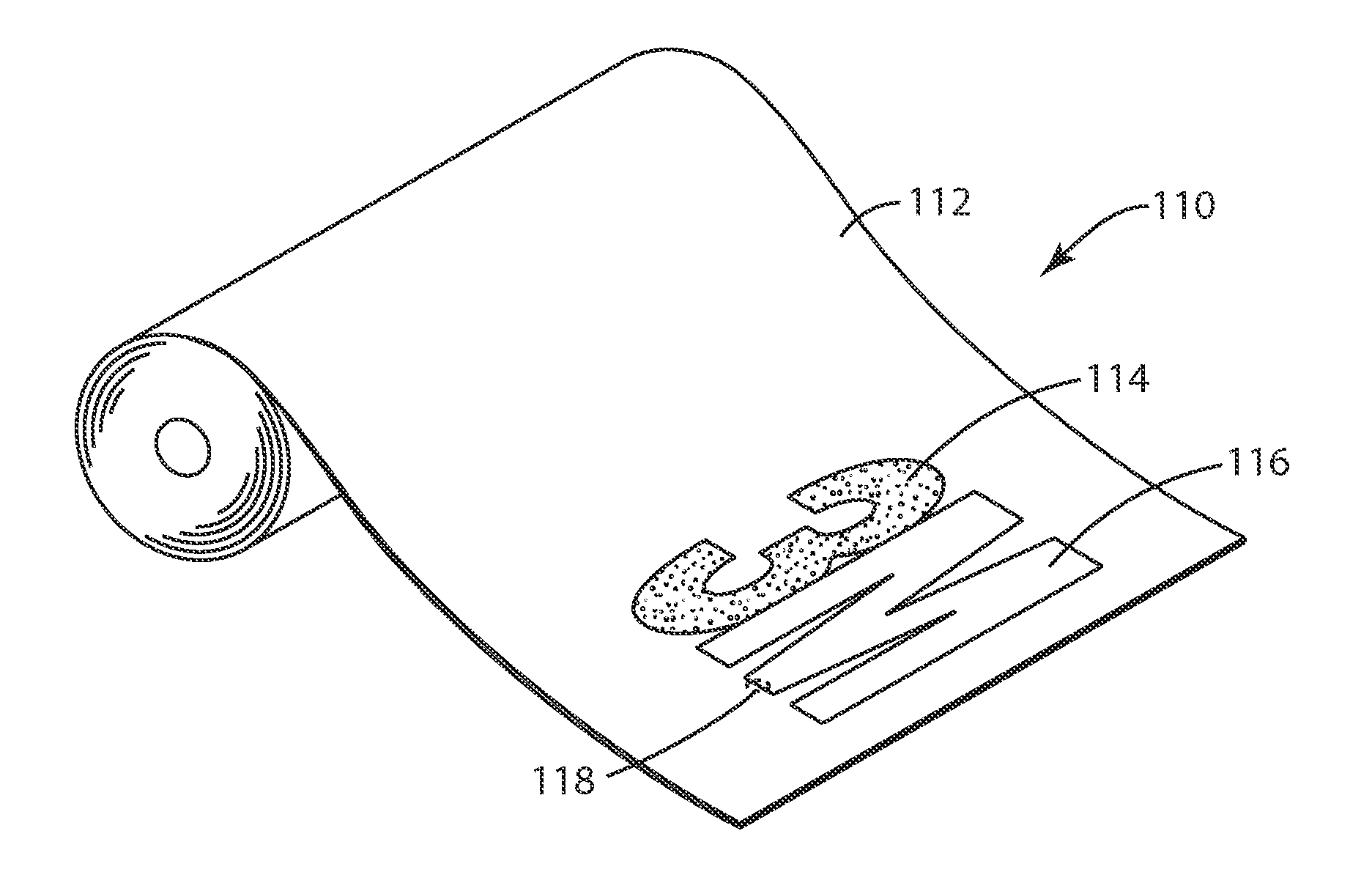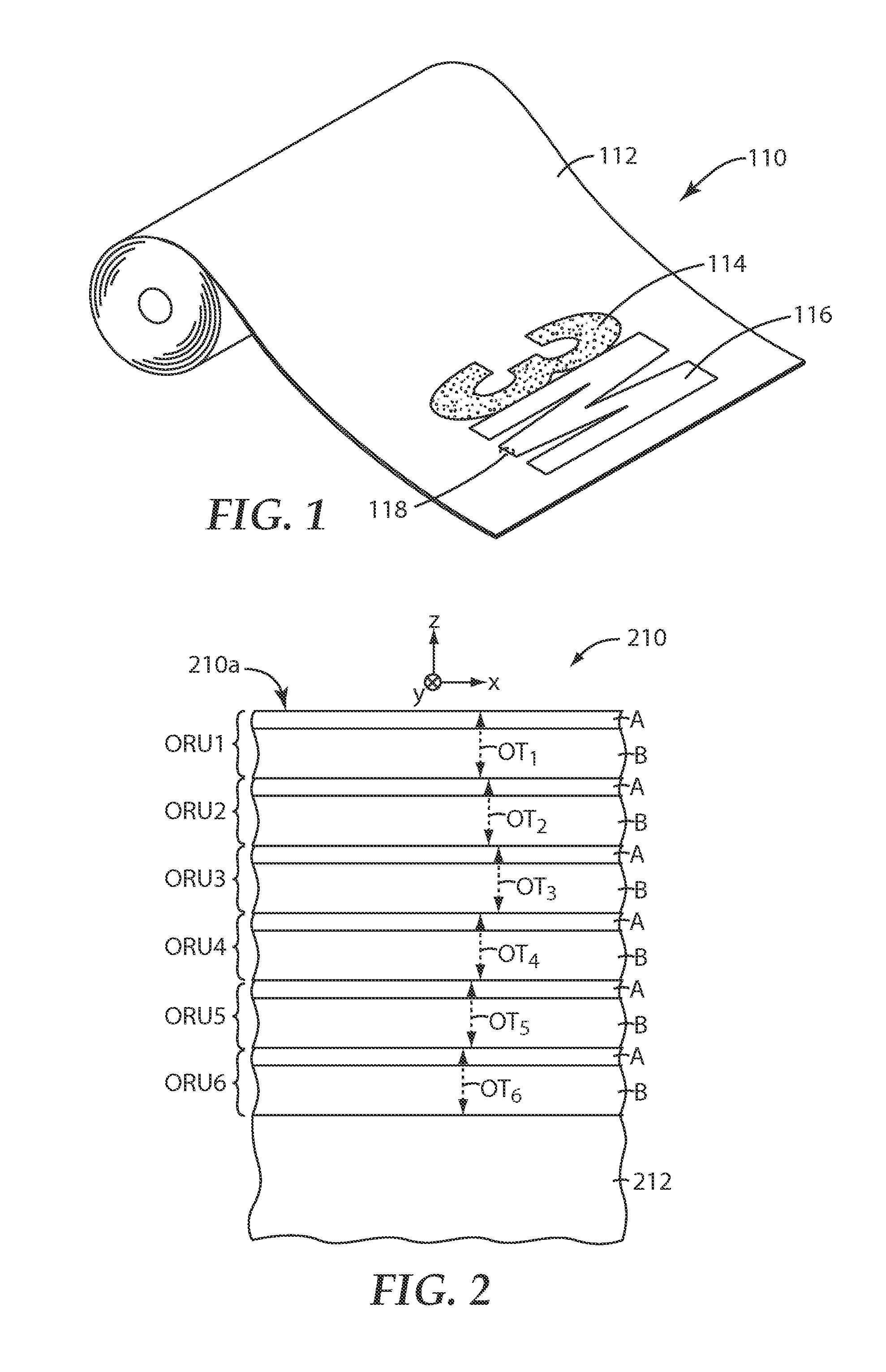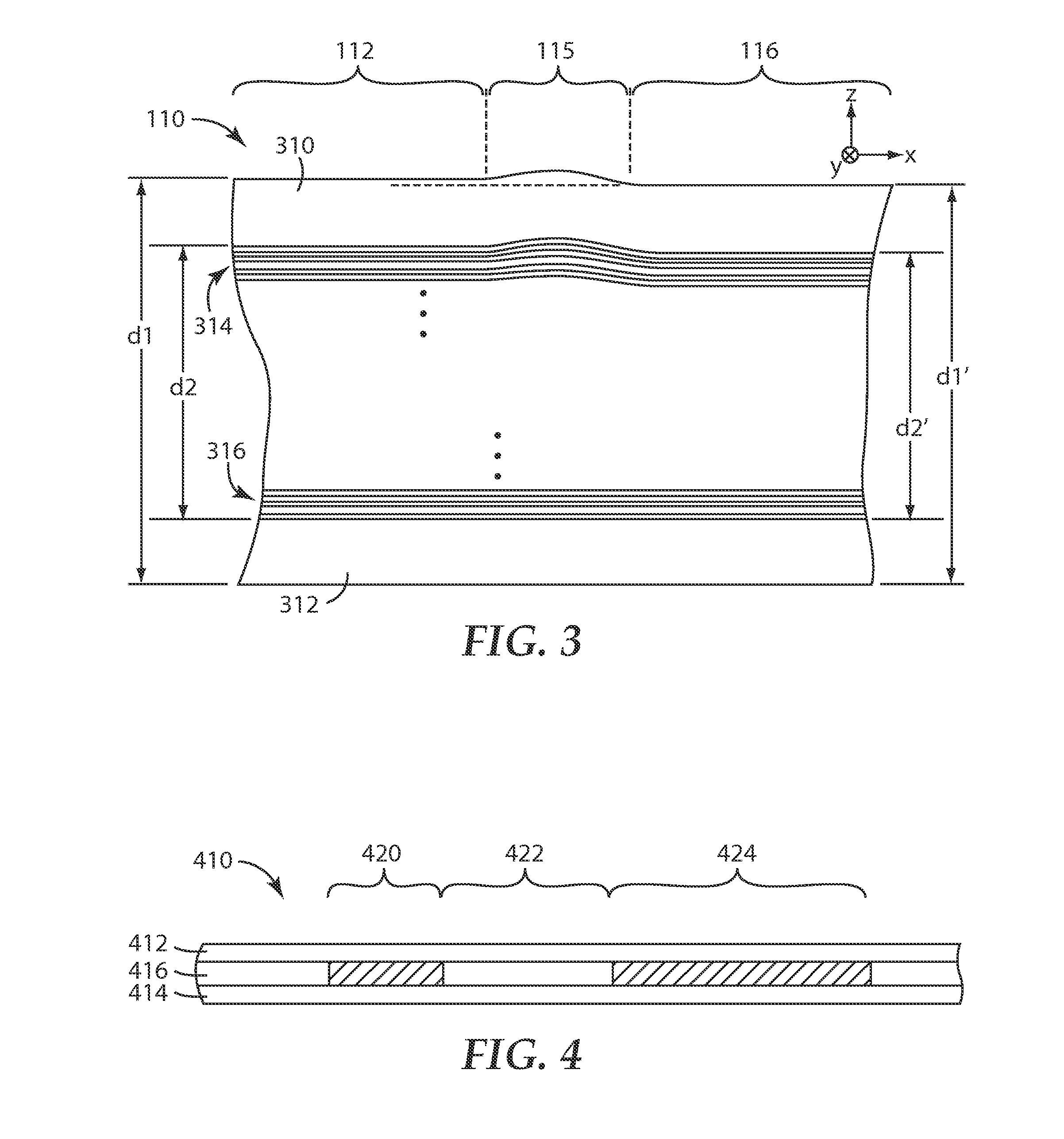Multilayer optical films suitable for bi-level internal patterning
a multi-layer, optical film technology, applied in the field of optical films, can solve the problems of monotonic decrease, limited applicability, and inability of skilled artisans to effectively practice bi-level patterning
- Summary
- Abstract
- Description
- Claims
- Application Information
AI Technical Summary
Benefits of technology
Problems solved by technology
Method used
Image
Examples
examples
Cast Webs 1, 2, and 3
[0178]The term “cast web” refers to a cast and formed multilayer body prior to subsequent drawing and orientation but after the initial casting process. A first multilayer polymer web, or cast web, was constructed using naphthalate-based co-polymers. The first such co-polymer is referred to as PEN-Gb and the second such co-polymer is referred to as coPEN 55 / 45 HD. The first co-polymer, PEN-Gb, is described in Example 7, so-called PEN-CHDM10, of U.S. Patent Application Publication US 2009 / 0273836 (Yust et al.). PEN-Gb is thus a co-polymer made with intial monomer charges in the proportion of 38.9 lbs NDC (dimethyl 2,6-naphthalene dicarboxylic acid—e.g. as available from BP Amoco, Naperville, Ill.) to 20.8 lbs of EG (ethylene glycol—e.g. as available from ME Global, Midland, Mich.) and 2.23 lbs of CHDM (cyclohexane dimethanol—e.g. as available from Eastman Chemical, Kingsport, Tenn.), according to Table 1 of the referenced U.S. patent application. The second co-po...
PUM
 Login to View More
Login to View More Abstract
Description
Claims
Application Information
 Login to View More
Login to View More - R&D
- Intellectual Property
- Life Sciences
- Materials
- Tech Scout
- Unparalleled Data Quality
- Higher Quality Content
- 60% Fewer Hallucinations
Browse by: Latest US Patents, China's latest patents, Technical Efficacy Thesaurus, Application Domain, Technology Topic, Popular Technical Reports.
© 2025 PatSnap. All rights reserved.Legal|Privacy policy|Modern Slavery Act Transparency Statement|Sitemap|About US| Contact US: help@patsnap.com



